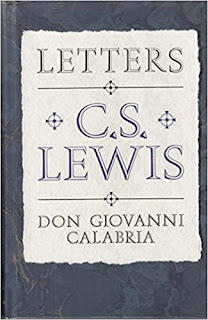Priest offered himself to God to save a Pope
Giovanni Calabria, who dedicated his life to helping the poor and the sick, died on this day in 1954 in Verona.
Giovanni Calabria dedicated
his life to the poor and sick
Roman Catholics throughout the world will celebrate his feast day today as a result of his canonisation by Pope John Paul II in 1999.
When Pope Pius XII became ill in 1954, Calabria offered himself to God to die in the place of the Pope. Pius XII began to get better and went on to live for another four years, but Calabria died the next day. After the Pope recovered he sent a telegram of condolence to Calabria’s congregation.
Giovanni Calabria was born in 1873 in Verona. He was the youngest of the seven sons of Luigi Calabria, a cobbler, and Angela Foschio, a maid servant.
Calabria was only a young child when his father died but he had to drop out of school to become an apprentice.
However, a rector at his local church saw his potential and gave him private tuition to prepare him for an exam that would determine whether he could begin studying for the priesthood.
But first Calabria had to serve in the army where he converted his fellow soldiers and was renowned for the strength of his faith. After completing his military service he resumed his theology studies with the intention of becoming a priest.
 |
| The letters between Calabria and CS Lewis have been published |
The following year he founded a charitable institution to help sick and impoverished people and started a home for abandoned young people.
Calabria was ordained as a priest in 1901 and then appointed as a confessor and a curate at a church in Verona.
He became the rector of San Benedetto al Monte in 1907, where he helped care for soldiers.
Later that same year he founded the Poor Servants of Divine Providence. Three years later, he formed a female branch, the Poor Women Servants of Divine Providence.
During World War II, Calabria helped a Jewish doctor to hide among his female congregation for 18 months, under the name of Sister Beatrice.
His longing for Christian unity led him to correspond in Latin with the British writer and theologian, CS Lewis, who spoke on the religious programmes broadcast by the BBC from London while the city was suffering air raids.
After offering himself to God to spare the life of Pope Pius XII, Calabria died on 4 December 1954 and was buried in his congregation’s motherhouse in Verona.
Pope John Paul II named Calabria as venerable in 1986, beatified him in 1988 and canonised him in 1999.
Travel tip:
The balcony that featured in the Shakespeare play
Romeo and Juliet attracts thousands of visitors
Verona, where Giovanni Calabria was born and carried out his Christian works, is famous throughout the world as the setting for Shakespeare’s play Romeo and Juliet, ‘in fair Verona where we lay our scene’. You can visit the home of the real life Juliet, Casa Giulietta, and see the balcony where the famous scene with Romeo took place. Verona is also famous for its Roman amphitheatre, L’Arena di Verona in Piazza Bra, where operas and music concerts are performed in the open air.
Travel tip:
Calabria was rector of San
Benedetto al Monte in Verona
The Church of San Benedetto al Monte, where Giovanni Calabria served as rector from 1907 to 1912, is in Vicolo Monte, just a short walk from Piazza Erbe in the centre of Verona. The church dates back to the year 1000 but was rebuilt in 1617. The 11th century Romanesque crypt, which has recently been restored, still has some Roman remains visible as it is located next to the site of Verona’s ancient Roman forum.
Also on this day:
1154: The election of Pope Adrian IV
1798: The death of physicist Luigi Galvani
1927: The birth of architect Gae Aulenti
1956: The birth of golfer Constantino Rocca












